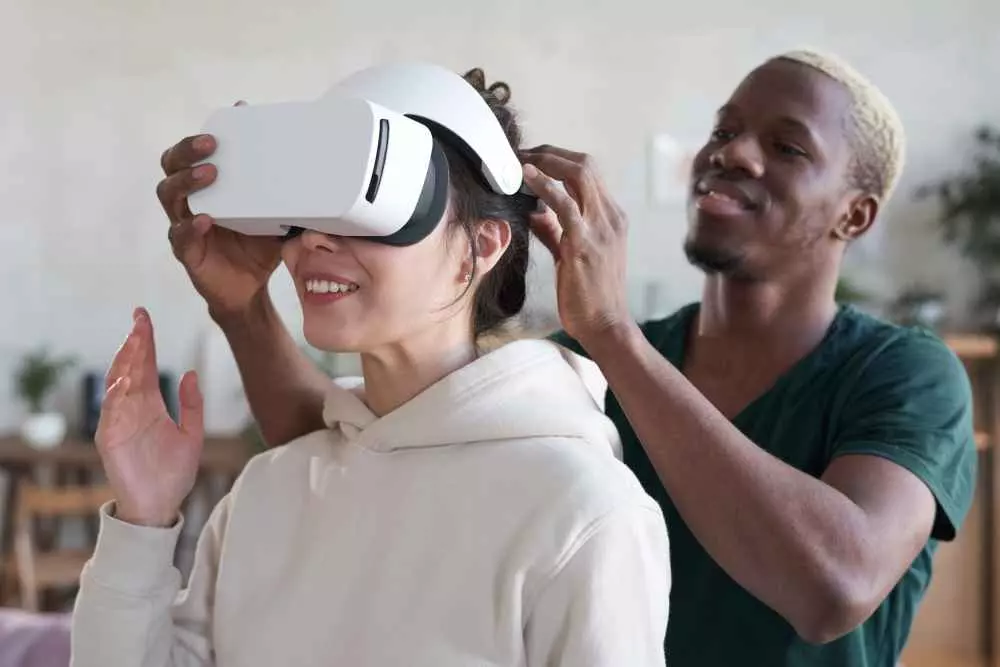Application of virtual reality in patient therapy
Introduction to virtual reality in therapy
In recent years, virtual reality (VR) has gained popularity in a variety of fields, and its application in patient therapy has become particularly interesting. The technology makes it possible to create immersive experiences that can support therapeutic processes in ways that were previously unattainable. From therapeutic games to simulations, VR is creating new possibilities for psychological as well as physical treatment.
How does virtual reality work?
Virtual reality involves creating a three-dimensional, interactive environment that users can explore using special devices such as VR goggles or motion controllers. In the context of therapy, these technologies are used to simulate situations that can help patients cope with their fears, phobias or other emotional problems.

One of the key elements of this technology is interactivity. Patients can interact with the virtual environment, allowing them to safely experience emotions and situations that might be too difficult to handle in real life.
Benefits of using VR in therapy
The use of virtual reality in therapy has many benefits. First of all, patients have the chance to be exposed to their fears in a controlled manner. This form of exposure therapy is particularly effective for phobias, PTSD or social anxiety.
What's more, VR offers the opportunity to personalize the therapeutic experience. Therapists can tailor virtual scenarios to the needs of a particular patient, which increases the effectiveness of therapy. For example, a person suffering from a fear of flying can be gradually introduced to air travel situations, allowing them to reduce their fear.
Examples of using VR in therapy
One of the best examples of using VR in therapy is for people with post-traumatic stress disorder (PTSD). Studies show that patients can experience a virtual reconstruction of traumatic events, which helps them process their emotions and eventually overcome them.
Another interesting example is the use of VR in therapy for children with autism. Virtual reality can be used to develop social skills by simulating interactions with other people in a safe environment.
VR in physical rehabilitation
Virtual reality also has applications in physical rehabilitation. Through interactive exercises in a virtual environment, patients can improve their motor skills in a way that is both engaging and motivating. Patients can perform exercises in a variety of scenarios, which not only increases their engagement, but also makes rehabilitation less monotonous.
Studies have shown that VR therapy in rehabilitation can speed up the healing process and increase the effectiveness of exercises, which is especially important in the context of patients following trauma, stroke or orthopedic surgery.
The future of virtual reality in therapy
The future of virtual reality in patient therapy looks promising. The technology is constantly evolving, which opens the door to new therapeutic applications and methods. As the technology advances, we can expect even more complex and realistic simulations that can provide patients with memorable therapeutic experiences.
As more and more studies show the benefits of VR in therapy, we can also expect to see an increase in the number of medical facilities using the technology. Collaboration between specialists from different fields, such as psychology, medicine and engineering, will be key to effectively introducing virtual reality into standard therapeutic practices.
Summary
Virtual reality is opening up new horizons in therapy, offering patients pioneering treatments that can produce measurable results. Thanks to the possibilities brought by this technology, therapists can effectively support their patients in difficult moments, using immersive experiences that are tailored to their individual needs. Virtual reality is becoming not only a tool, but also a revolution in the way we approach treatment and rehabilitation.
Add comment